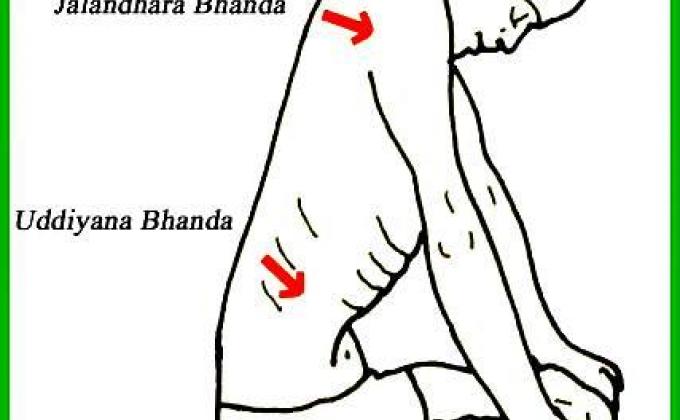
"Cleansing the body with breath control
Breathing arises inside
and wanders as he pleases.
Control and cleanse it
then your limbs will be reddened,
hair will turn dark again
and the God inside will never leave you. "
Rishi Tirumular "Tirumantiram", tantra 3 (575)
Breath control is based on the implementation of three locks (bandhas):
~ throat lock (jalandhara bandha),
~ the lock that locks the lower gate - anus and perineum (mula bandha),
~ abdominal lock (uddiyana bandha).
"A yogi should do three bandhas: moola bandha, uddiyana bandha and jalandhara bandha."
Yoga Kundalini Upanishad (35)
Jalandhara bandha means pressing the chin against the collarbone.
Mula bandha means contraction of the muscles in the perineum.
Uddiyana bandha means pulling the lower abdomen towards the spine.
These three locks are the main ways of locking in prana.
With the help of moola bandha, apana vayu is controlled, which tends to go down. Performing it, the yogi pulls the apana-vayu up.
Jalandhara bandha controls prana vayu, which tends to rise upward. Pressing the chin to the collarbones, the yogi lowers the prana-vayu. With the help of uddiyana bandha he mixes apana vayu, prana vayu and samana vayu at the navel and introduces them into the central channel.
Usually bandhas are performed in the following order: after inhalation, the throat is compressed, then the anus, and then the abdomen. Conversely, when the exhalation is made, first the uddiyana bandha is released, then the moola bandha, and then the jalandhara bandha.
